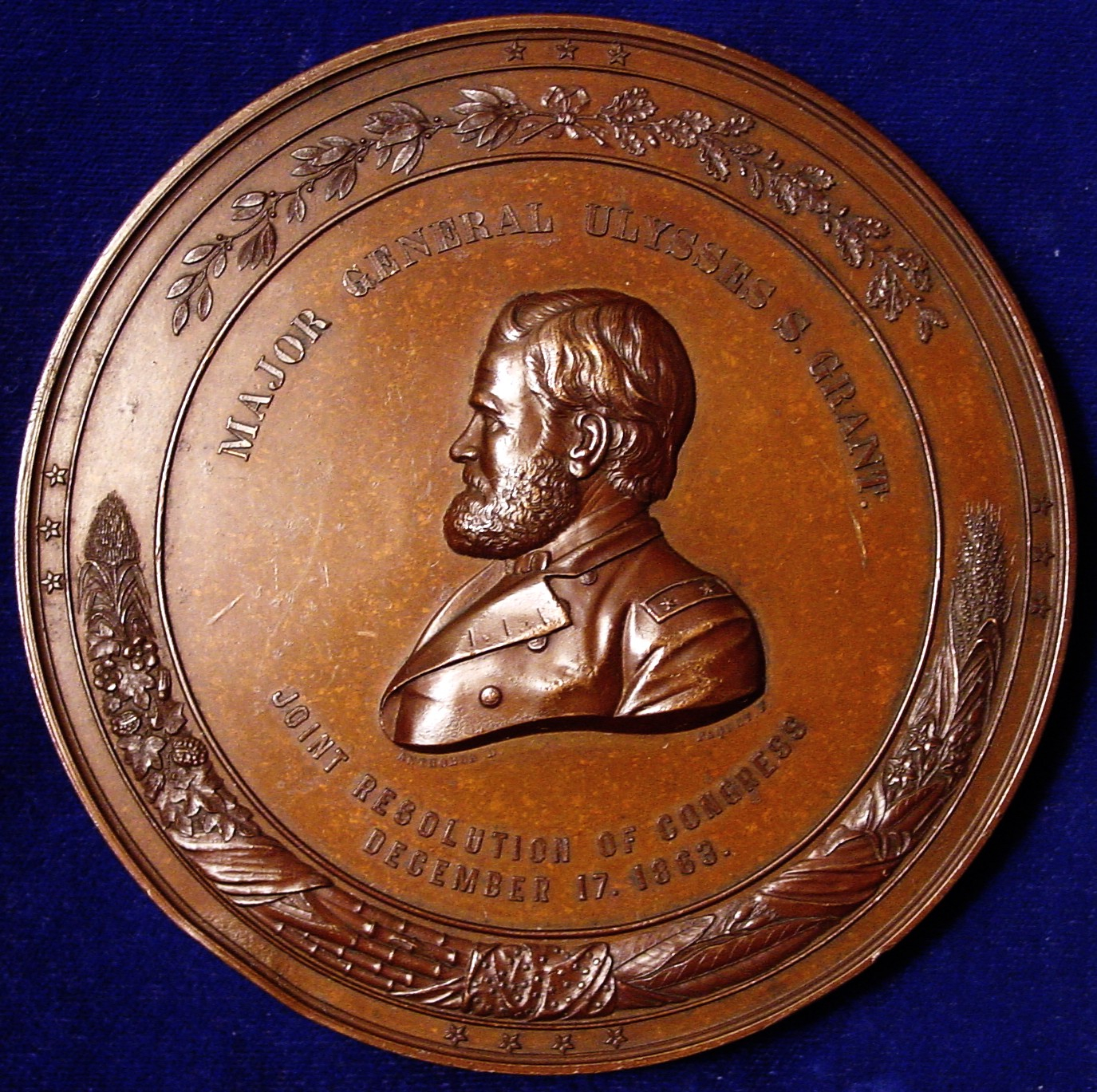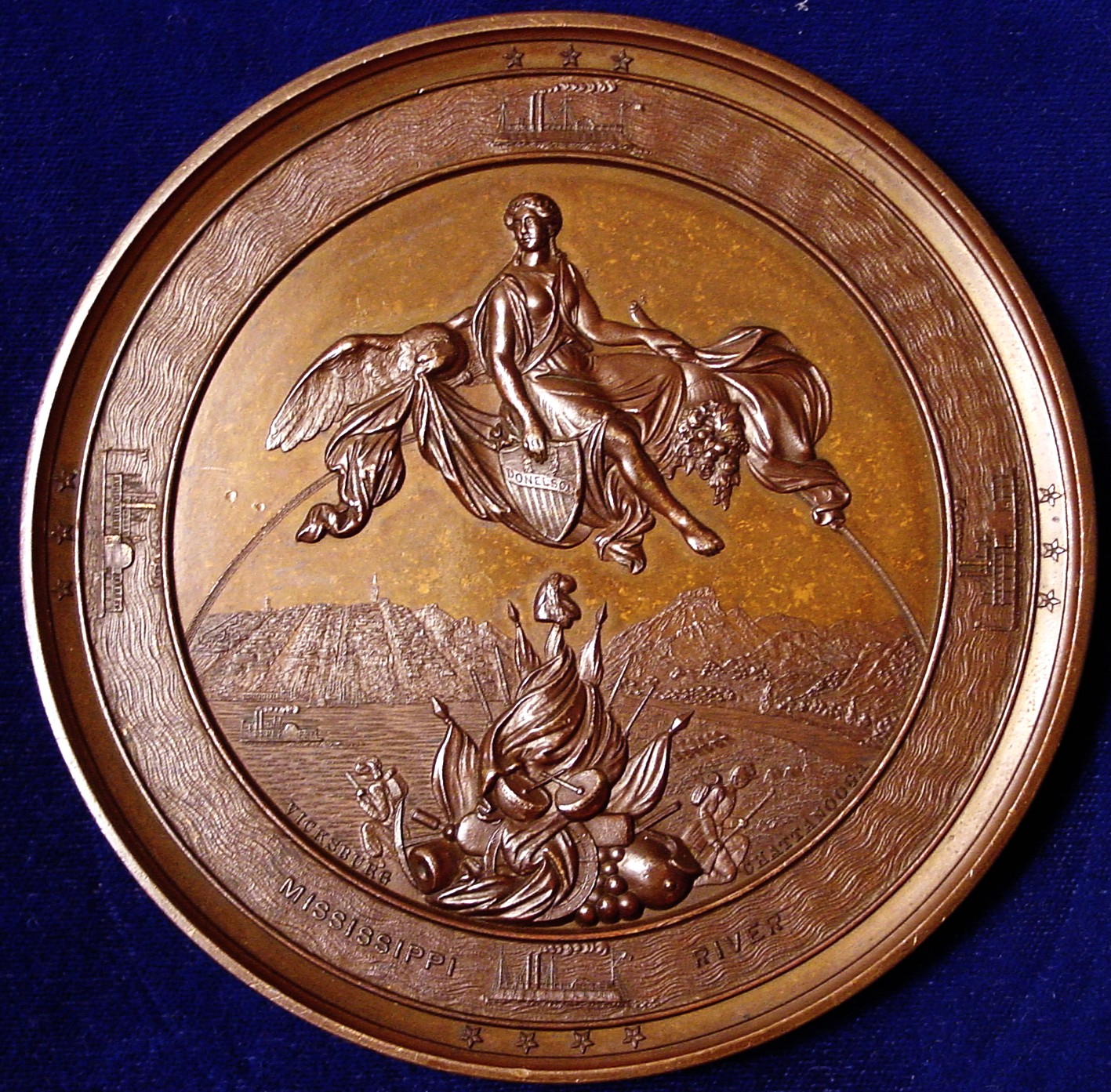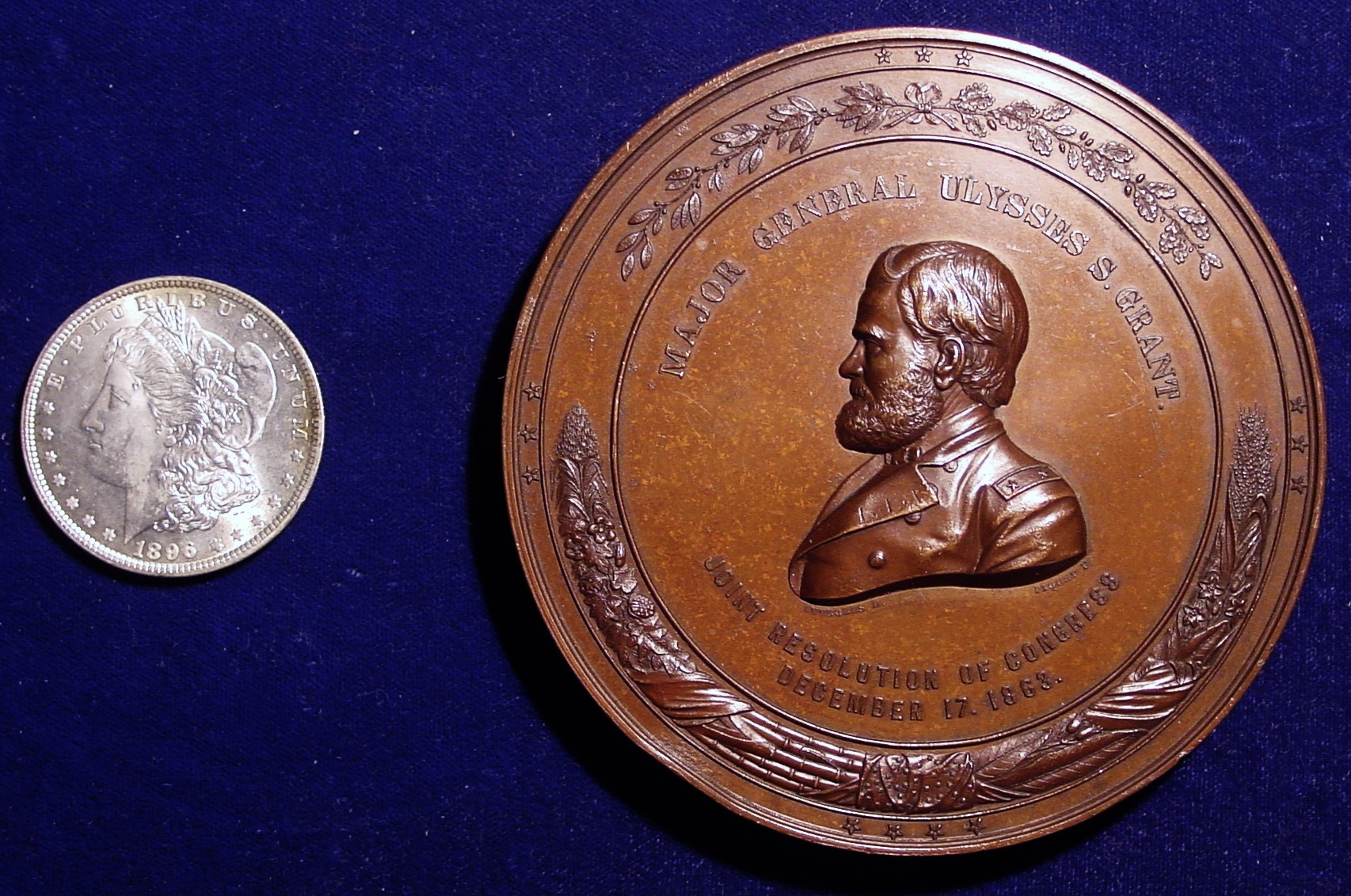The Largest Piece in My Collection - A Grant Vicksburg Medal
On December 17, 1863 Congress voted to award to gold medal to General Ulysses S. Grant for his victory at the Battle of Vicksburg. The medal would also sight his victory at Chattanooga, and symbolically states that the capture of Vicksburg gave the Union side control of the Mississippi River.
Anthony Paquet, who made the dies for that 1861 double eagle which was withdrawn from circulation, designed this piece. The dies were made by John Antrobus, who was from Chicago, for a fee of $2,200. It is a massive 105 mm in diameter. The gold medal that was awarded to Grant contained 28.77 ounces which works out to 2 and a third pounds of gold.
The obverse features a handsome portrait of the General Grant and the date on which the Congress awarded him the piece. The reverse features a goddess of commerce, which is similar to the Liberty Seated design that appeared on U.S. coinage for much of the 19th century. Below her is a war trophy design and a view of the Mississippi River.
The 19th century mintages were 1 in gold, 1 in silver, 2 in white metal, a few in gutta percha and leather, and 126 examples in copper. The mint did produce modern "yellow bronze" examples of the this medal in the 20th century, but those pieces were only 76 mm in diameter.
Here are photos of the obverse and reverse of the medal and a comparative photo of the medal with a silver dollar.



Anthony Paquet, who made the dies for that 1861 double eagle which was withdrawn from circulation, designed this piece. The dies were made by John Antrobus, who was from Chicago, for a fee of $2,200. It is a massive 105 mm in diameter. The gold medal that was awarded to Grant contained 28.77 ounces which works out to 2 and a third pounds of gold.
The obverse features a handsome portrait of the General Grant and the date on which the Congress awarded him the piece. The reverse features a goddess of commerce, which is similar to the Liberty Seated design that appeared on U.S. coinage for much of the 19th century. Below her is a war trophy design and a view of the Mississippi River.
The 19th century mintages were 1 in gold, 1 in silver, 2 in white metal, a few in gutta percha and leather, and 126 examples in copper. The mint did produce modern "yellow bronze" examples of the this medal in the 20th century, but those pieces were only 76 mm in diameter.
Here are photos of the obverse and reverse of the medal and a comparative photo of the medal with a silver dollar.



Retired dealer and avid collector of U.S. type coins, 19th century presidential campaign medalets and selected medals. In recent years I have been working on a set of British coins - at least one coin from each king or queen who issued pieces that are collectible. I am also collecting at least one coin for each Roman emperor from Julius Caesar to ... ?
0
Comments
Also the depiction of Vicksburg and Chattanooga,
A large format image of that piece combining the obverse and reverse would make for a wonderful framed addition to any coin den.
"Inspiration exists, but it has to find you working" Pablo Picasso
The attractive and detailed scenic reverse reminds me of the beautiful City View Talers from the Dark Side...
Stuart
Collect 18th & 19th Century US Type Coins, Silver Dollars, $20 Gold Double Eagles and World Crowns & Talers with High Eye Appeal
"Luck is what happens when Preparation meets Opportunity"
--Severian the Lame
I knew it would happen.
My YouTube Channel
<< <i>To continue the story, here is a picture of Grant's gold medal and box which is in the Smithsonian. The box is even a big deal. It is made of ebony and the metallic hardware on it is gold. Julia Dent Grant (Grant's widow) and William Vanderbilt donated this piece to the Smithsonian.
So what is the eagle mounted on the lid composed of?
Eagle, drapery, cannons, spectacular, what's the story on the box? One of a kind?
<< <i>I guess I am a nerd, I see that amazing gold medal and all I can think of is (shame, UNC details cleaned) >>
It may or may not have been cleaned. Those velvet lined boxes are not always the best long term storage devices. If the medal moves around in the box, the points on the velvet can hairline the piece. Since this medal is made of gold it is very soft and can easily pick up the marks.
I'd say the odds are it might have been cleaned, but I don't think that it's 100%.
Experience the World through Numismatics...it's more than you can imagine.
I wonder who received the original copper medals, Grant's officers, Members of Congress, etc.
The Mysterious Egyptian Magic Coin
Coins in Movies
Coins on Television
Great thread, Bill.
"Look up, old boy, and see what you get." -William Bonney.